Participating in the newest communications technologies becomes compulsory if you want to remain part of the culture. This quote by David Porush highlights the significance of businesses adopting new technologies for communication.
Several technologies are working towards making the communication process easy for businesses. Among these technologies, VoIP PBX is known as the newest innovation.
This article discusses virtual PBX, how it is reshaping the landscape of communication systems, its current state, its key features, and the opportunities it presents in the future.
What Exactly is Virtual PBX?
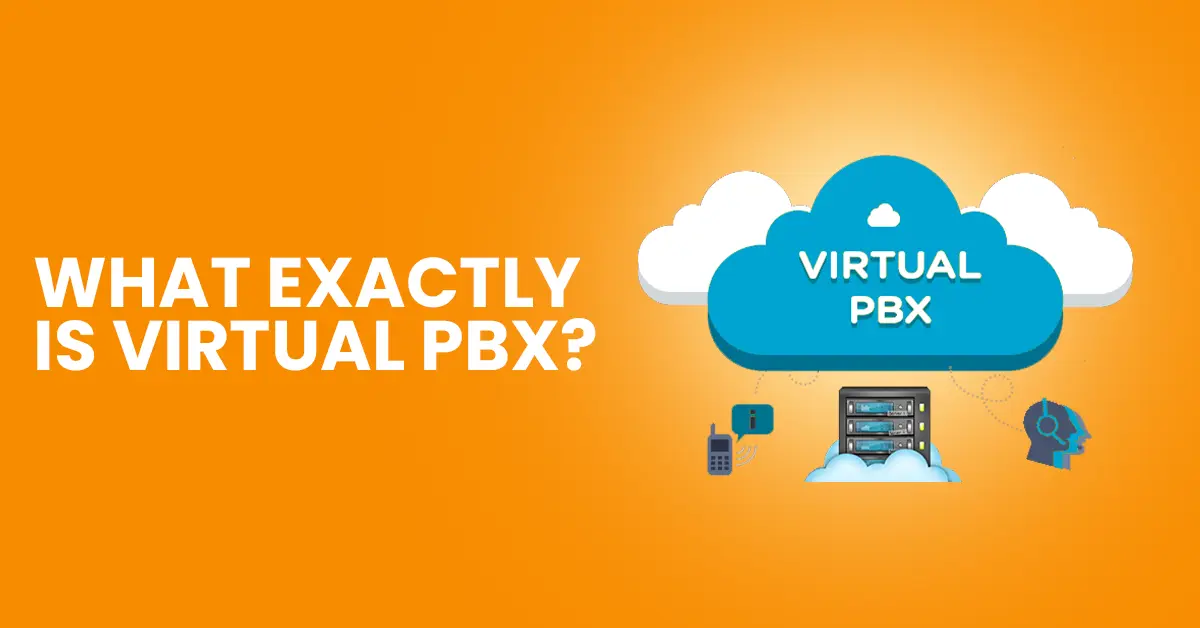
Virtual PBX, or Virtual Private Branch Exchange, is a modern phone system for businesses that operate over the Internet instead of traditional phone lines. It’s like a sophisticated switchboard in the digital world.
With Virtual PBX, businesses can easily connect their team members, whether in the office, working remotely, or on the move. It’s especially useful for modern businesses, where flexibility and remote work are increasingly common.
Current State of Virtual PBX Software
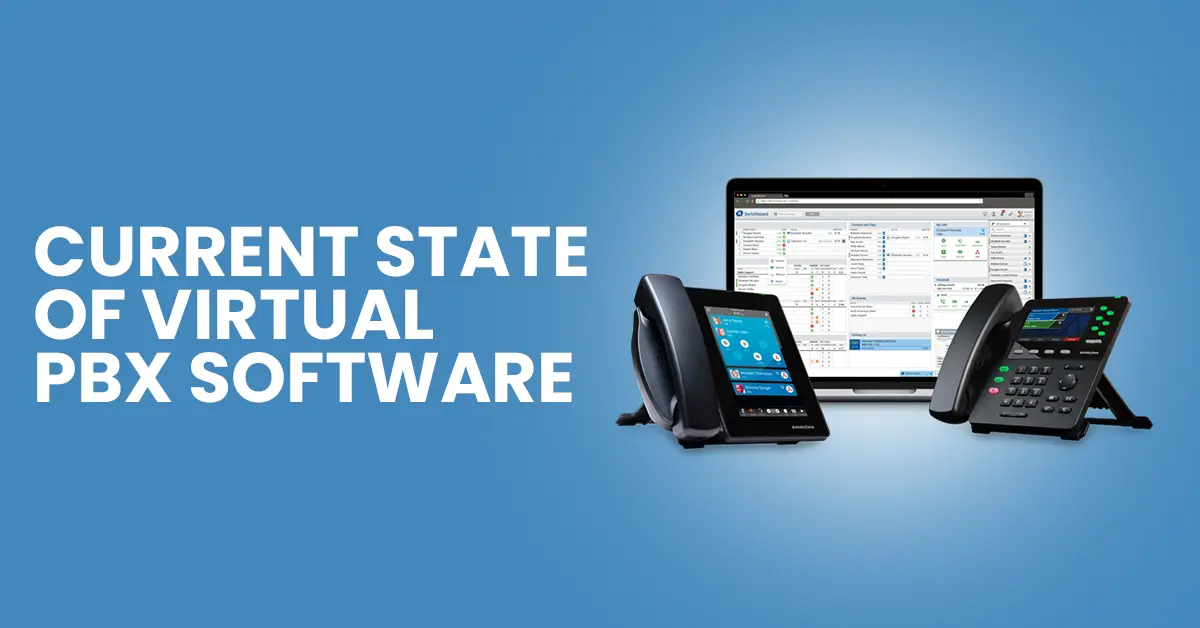
Virtual PBX Software has evolved significantly in recent years. It offers more than enough features to fulfill businesses with diverse needs.
The current state of virtual office phone systems is all about making business communication smoother and simpler. Features of this digital PBX include –
- Call routing,
- Voicemail integration with auto-attendant systems, and
- Easy CRM integration
Modern business owners love this business phone solution because it keeps their team connected no matter where they are. Whether you are in the office, working from home, or on the move, virtual PBX software ensures easy communication.
Additionally, this software is a money saver. With it, you don’t have to spend a large amount on fancy equipment or hire a whole team to manage it. Security is also a top priority for this software. It has built-in measures to keep your calls and data safe.
Key Features of Virtual PBX Software
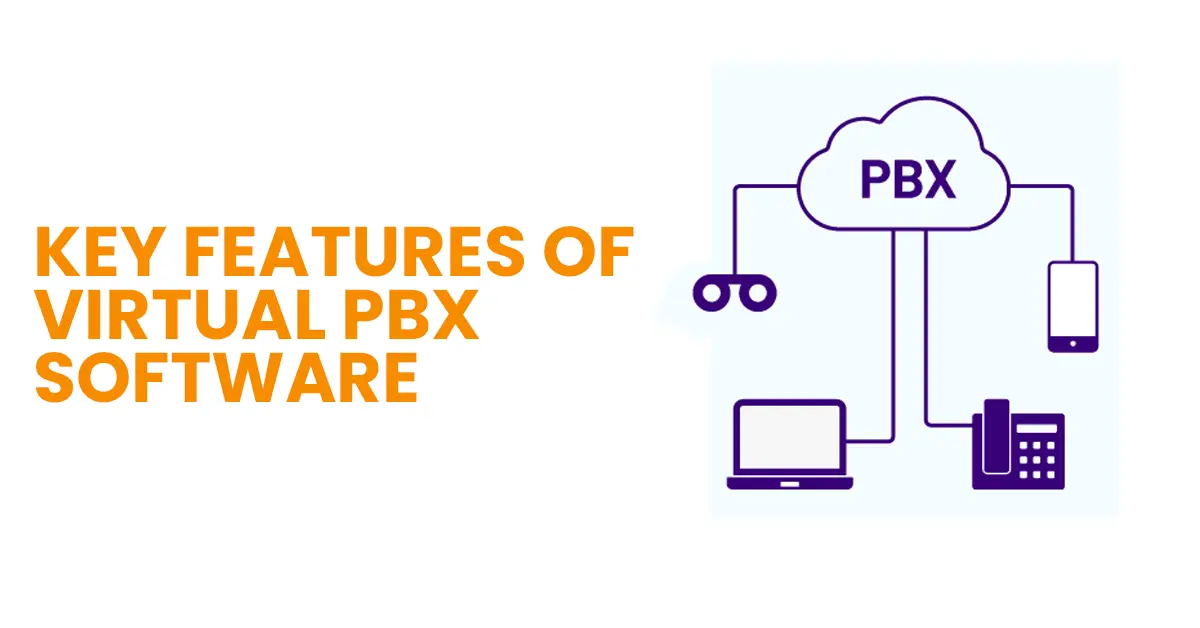
Five key features empower your business and ensure easy communication.
1. Call Routing and Management
Virtual PBX software optimizes call routing, efficiently directing incoming calls to the appropriate person. This streamlined process ensures smooth and effective organizational communication flow by routing incoming calls based on various criteria like time of day, caller ID, or IVR selections. Calls can be forwarded to specific extensions, departments, or external numbers, ensuring efficient call distribution and handling.
2. Voicemail and Fax Integration
A PBX (Private Branch Exchange) phone system integrates seamlessly with voicemail, allowing callers to leave messages when users are unavailable. Each extension has a dedicated voicemail box, accessible through the PBX interface. Unanswered calls are routed to the appropriate voicemail, where callers can record messages. Users can retrieve voicemails by dialing a code or using a web interface, with options like voicemail-to-email for convenience.
Many PBX systems also integrate with fax servers or fax-over-IP solutions for sending and receiving faxes directly through the PBX. Users can send faxes by dialing an extension and the destination fax number, followed by the document. Incoming faxes are routed to a designated fax server or virtual mailbox within the PBX. Users can access received faxes through the PBX interface, web portal, or email, eliminating the need for dedicated fax machines.
This integration of voicemail and fax systems with the PBX ensures efficient communication by minimizing missed opportunities. Voicemail captures important messages when users are unavailable, while fax integration facilitates seamless document exchange.
3. Auto-Attendant and IVR Systems
Auto-attendant and Interactive Voice Response (IVR) systems elevate customer service experiences by efficiently directing callers to the right departments or individuals. This feature eases communication methods and ensures prompt assistance.
4. Scalability and Flexibility
The software offers great scalability through its modular design, allowing easy expansion by adding components to accommodate more users, extensions, and channels. It supports multi-site integration for seamless communication across locations.
Additionally, it provides flexibility with customizable features tailored to specific needs, unified communications integration (voice, video, messaging), remote access capabilities, integration with third-party apps like CRM/ERP, and choice of cloud-based or on-premises deployment. This scalability and flexibility ensure the system adapts to evolving business requirements and processes.
5. Integration with CRM and Business Tools
Seamless integration with Customer Relationship Management (CRM) and other business tools boost productivity and streamline workflow efficiency. This approach ensures smoother operations and better management of customer interactions.
Impact of Virtual PBX Software on Communication Systems
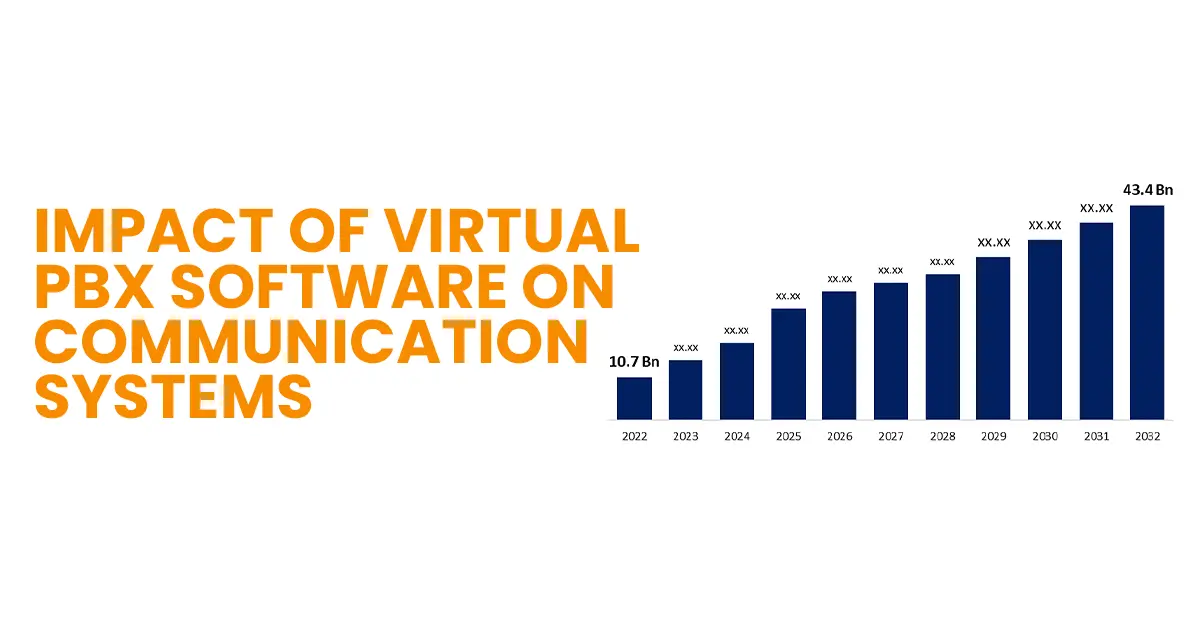
Virtual PBX Software revolutionizes communication systems, making them smoother and more efficient for businesses. By routing calls, managing voicemail, integrating faxes, and implementing auto-attendant and IVR systems, the remote phone system ensures uninterrupted interaction with customers and within teams.
Moreover, its scalability and flexibility empower businesses to adapt their communication infrastructure to changing needs without significant investment in hardware upgrades. Integrating with CRM and other business tools further enhances productivity by centralizing data and streamlining workflows.
The impact of the software is crucial. It simplifies communication processes, saves time and resources, and improves efficiency. With Virtual PBX, businesses can provide better customer service, foster smoother internal collaboration, and drive growth and success.
Challenges and Opportunities
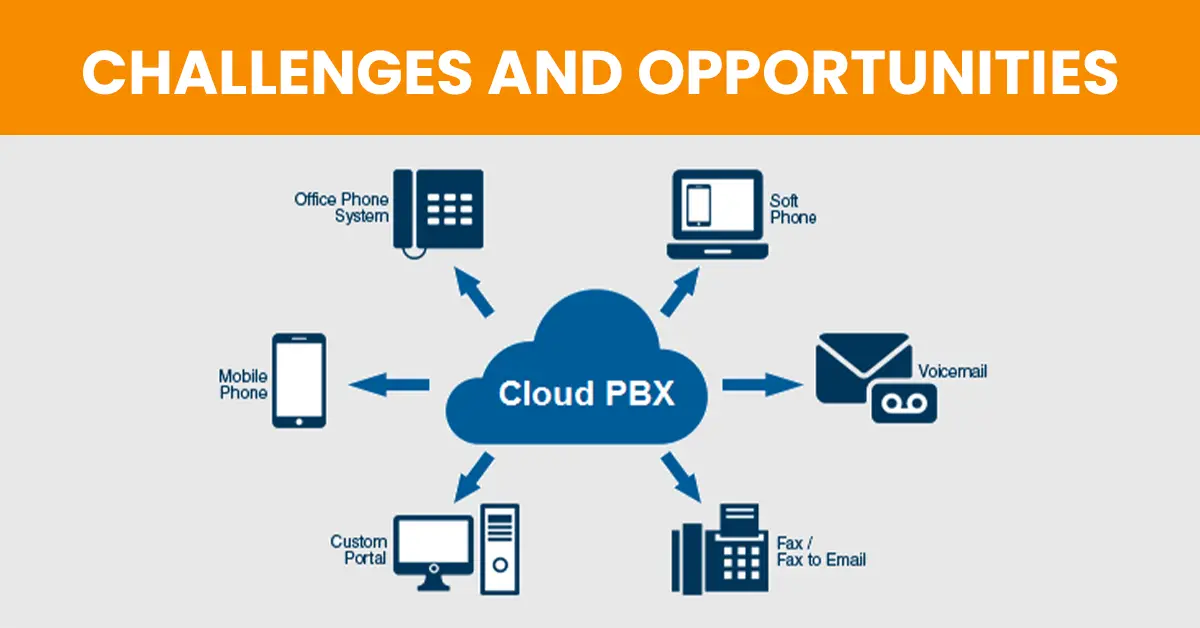
Despite its numerous benefits, Virtual PBX software presents challenges, including regulatory compliance, security concerns, and integration with legacy systems. However, these challenges also present opportunities for innovation and growth in the market.
-
Regulatory Compliance
Ensuring compliance with standards like GDPR and HIPAA presents a hurdle for Virtual PBX providers. However, it shows the importance of data privacy and security. This ensures the significance of strong measures to protect sensitive information and maintain regulatory adherence.
-
Security Concerns
Protecting sensitive information from cyber threats remains a top priority for businesses utilizing Virtual PBX software. They focus on securing information, as it’s crucial for their operations and maintaining customer trust.
-
Integration with Legacy Systems
Connecting Virtual PBX software with old legacy systems might be tricky, but it opens opportunities for updating and improving operations. Even though it’s complex, it can make things better and more efficient in the long run.
-
Potential Growth Areas and Market Opportunities
The Virtual PBX market is assured of significant growth, driven by increasing demand for flexible communication solutions and technological advancements.
Key growth areas of VoIP PBX include integrating Artificial Intelligence (AI) and Machine Learning (ML) capabilities, enhanced security features, and expanded functionalities to support remote work and collaboration.
These features make this software a crucial business phone solution for any types of businesses.
Wrapping Up
Virtual PBX software represents a transformative force in modern business communication, offering a wide range of features and benefits that enhance connectivity, efficiency, and productivity.
While challenges such as regulatory compliance and security concerns persist, the opportunities for innovation and growth in the IP PBX market are vast.
By leveraging the power of Virtual PBX software, businesses can unlock new possibilities and stay ahead in this competitive business world.
Learn more about hosted PBX with VoIPElements; contact us for further assistance.


